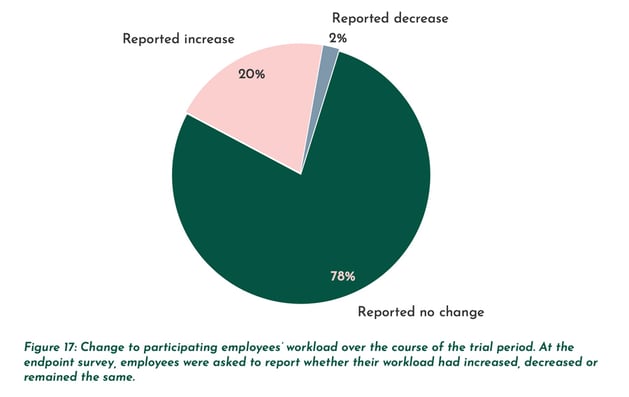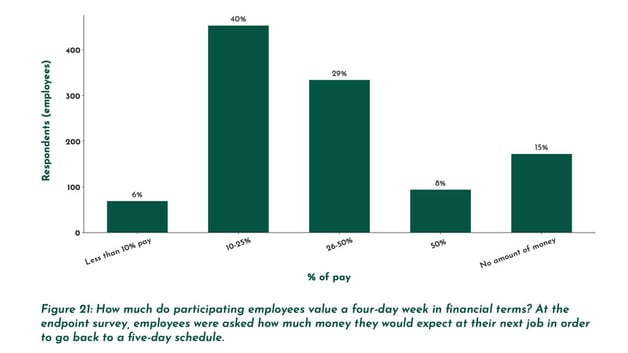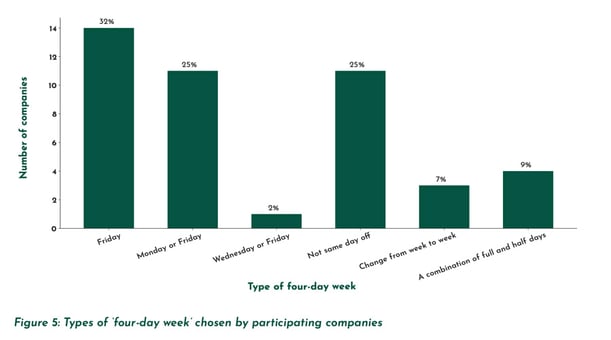Raise your hand if the date September 25th, 1926, sticks in your mind. This date is quite familiar to me, but most people, I’m sure, have no recollection. To level-set, this is the day that Henry Ford announced the 8-hour, 5-day working week.
This was a major change. Most other factories demanded six-day working weeks. History indicates the reasons behind Ford’s decision were – more time off, and more leisure time to spend money, and “perhaps” purchase a new vehicle. It is possible, that even nearly 100 years ago, he had worked out the benefits of work-life balance! One can imagine other things that may have in fact been part of his impetus to make the move to a 5-day working week.
Of course, labor laws – particularly in the US – continued to change with the Great Depression and other events of the era. But it seems that the 5-day working week has been a permanent fixture since then. However, in recent years, a number of studies and trials have been conducted on the length of the working week. The results of the latest – and largest – may indicate part of what Henry Ford seemed to indicate in his change to the length of the working week. Less is sometimes more.
The background
From June through December of 2022, the world’s largest four-day working week trial to date was conducted in the UK. The trial consisted of a range of companies and organizations who designed policies and models tailored to meet their specific needs. The only requirements were that employees maintained their “full” pay, while also experiencing a “meaningful” reduction in working time. Both qualitative and quantitative data was collected from the companies as well as employees prior to, during, and at the conclusion of the pilot to determine the results – (full report here).
Prior to the trial
Several of the companies and organizations asked – or required their staff to come up with ways to improve efficiency. Some of those ideas, according to the executive summary, were:
- Changing the meeting “norms” such as, making them shorter, less frequent, and with clearer agendas and objectives
- Reforming email etiquette, encouraging staff to be more attentive to the purpose of their messages and who needs to be involved
- Creating a task-list before leaving work, to hand over to colleagues or hit the ground running on the following day
- Reducing the number of staff involved in a particular process
The preparation period also included consulting with legal teams, rules for the trial, and other matters that were important to successful execution of this pilot. In some cases, outside firms were brought in to shape four-day work policies that would be fair to team members across the organizations.
The Results
- 92% of the companies who participated in the trial intend to continue with the 4-day working week (18 of the companies reporting this is a permanent policy change)
- 39% of employees were less stressed & 71% reported less burn out at the end of the trial
- Revenue increased by 1.4% over the trial period
- Absenteeism dropped, as did resignations (even though the trial took place during the now dubbed “great resignation”)
- 21% reported a reduction in childcare costs
- 78% reported no change in workload

[Image Courtesy: Autonomy]
Employees also reported increases in “life satisfaction";
“At the beginning of the trial, when asked how satisfied they are with their life (from 0 ‘not satisfied at all’, to 10 ‘completely satisfied’), participants responded with an average of 6.69 out of 10. This measure had an almost full point increase, to 7.56. Employees are also more satisfied with other domains of life, including household finances (44% reported an increase) and relationships (45% reported an increase). Most notably, employees recorded an increase in over two points regarding satisfaction with time, from 5.28 before the trial to 7.51 after. 73% said that they had greater satisfaction in this regard.”
- Autonomy
The bottom Line
At the end of the trial period, participants were asked to put a value on a four vs. five-day working week. The chart below gives a clear indication of their takeaway. A full 15% reporting that no amount of money could make them go back to a 5-day week.

[Image Courtesy: Autonomy]
What’s in a “work day”
At UP, we talk a lot about work. As the first cloud-based agency, it is never far from mind that in certain industries, “where” one works from does not affect the resultant quantity or quality of work. Excellent people execute excellent work, regardless of their location. However, it can also be said that remote work may result in an erosion of one’s work-life balance. It is much more difficult to “unplug” when one’s work is staring at them from the corner of the room vs. in an office that is 30 minutes away. This is why, even in a remote work business model, work-life balance is one of UP's core values.
The 4-day week pilot utilized a variety of “types” of time reduction. Some organizations chose a fifth day stoppage, while others used a staggered or decentralized approach. A total of six different approaches were used. This is a good example and indication that multiple approaches can be used to achieve a similar goal in a world where one size does clearly not fit all.

[Image Courtesy: Autonomy]
A Perspective from outside the study
A long time ago, in a different lifetime, I worked as a manager at a manufacturing plant. Our build schedule was 4 days a week, not the standard 5 days a week that the rest of the company operated on. As a manager, I didn’t reap the benefits of the 4-day week, but I can tell you that my team members – in comparison to those at other plants who worked a 5-day working week were:
- Happier, friendlier, more upbeat with a willingness to bring more to the table
- More rested, fewer called in sick, and were more energized
- Delivering higher output, with fewer mistakes and less required rework
- More attentive to detail and more willing to work to improve productivity
- Were more innovative and cooperative in seeking resolutions to design and product development
- Less likely to relocate to another plant within the company
- Having fewer disagreements on work site issues/pay/etc., than what occurred at other company locations
This option never did catch on throughout the rest of the company, which was always somewhat bewildering to me. From my perspective it was clear that the extra day was really value added, not only to the employee, but also to the company. Rarely, if ever, in business do you find an option that is truly a win-win.
Would a four-day working week work for your business? What would you do on that extra day off every week?